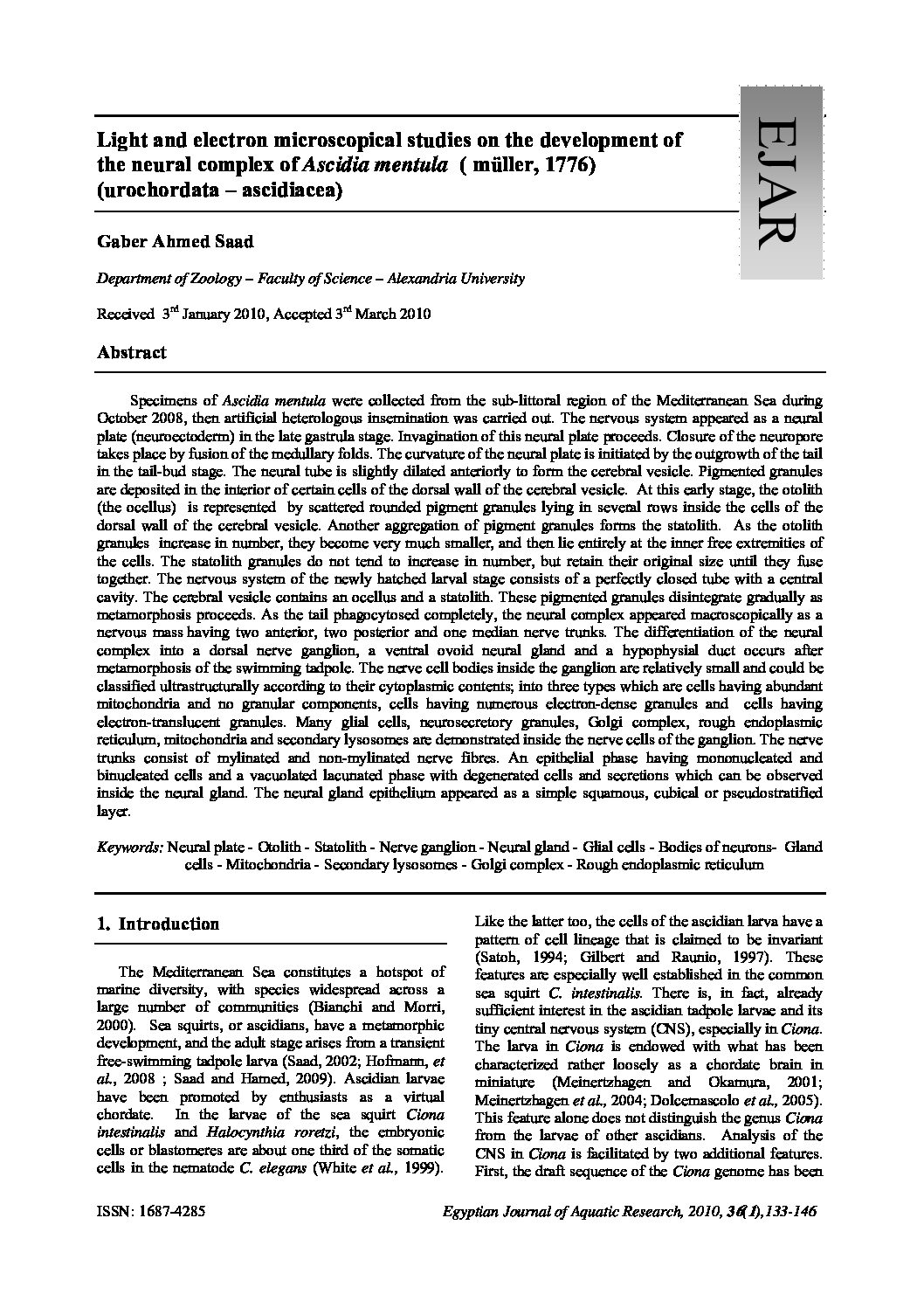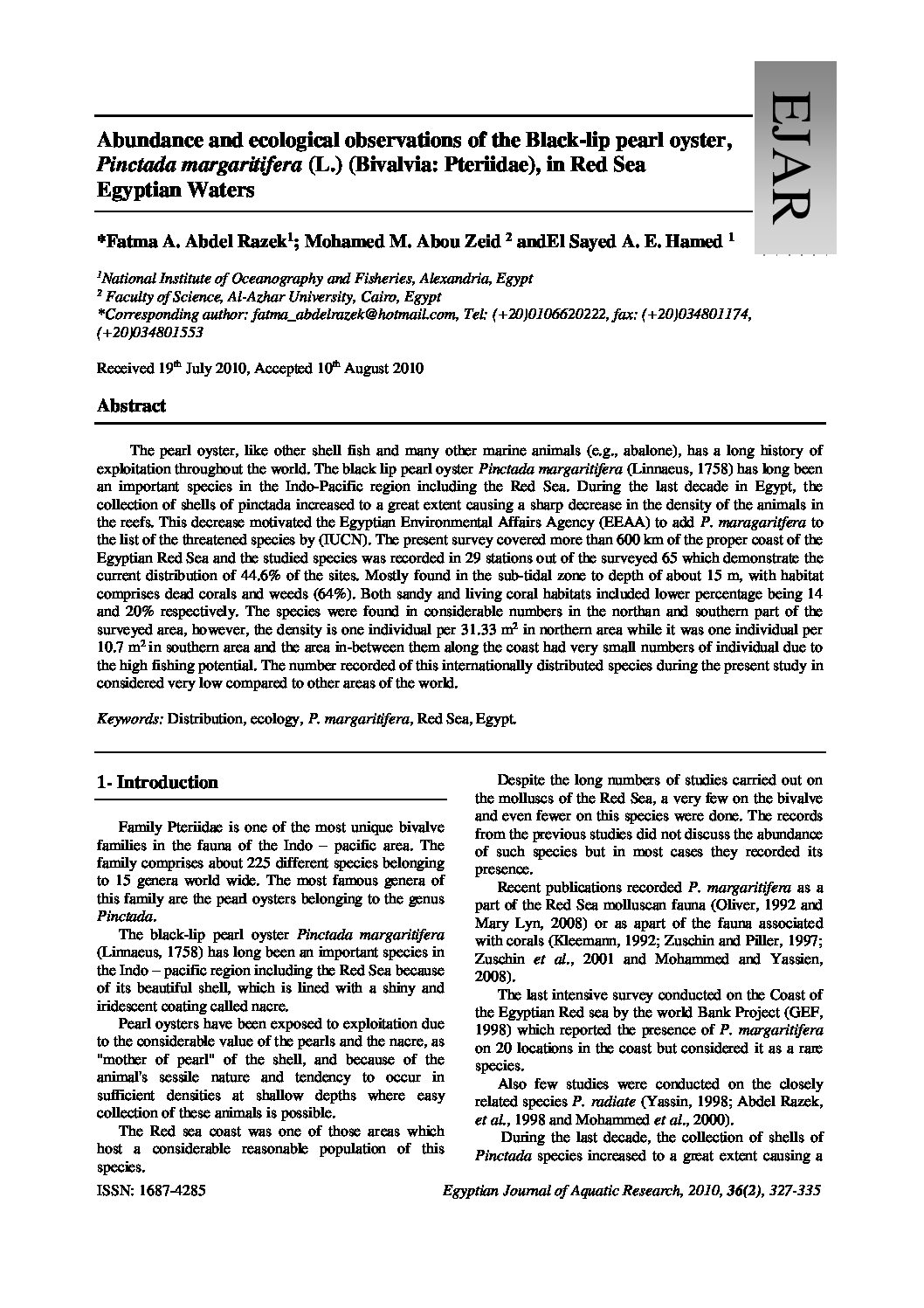Categories
vol-36Light and electron microscopical studies on the development of
the neural complex of Ascidia mentula ( müller, 1776)
(urochordata – ascidiacea)
Gaber Ahmed Saad
Department of Zoology – Faculty of Science – Alexandria University
Received 3rd January 2010, Accepted 3rd March 2010
Abstract
Specimens of Ascidia mentula were collected from the sub-littoral region of the Mediterranean Sea during
October 2008, then artificial heterologous insemination was carried out. The nervous system appeared as a neural
plate (neuroectoderm) in the late gastrula stage. Invagination of this neural plate proceeds. Closure of the neuropore
takes place by fusion of the medullary folds. The curvature of the neural plate is initiated by the outgrowth of the tail
in the tail-bud stage. The neural tube is slightly dilated anteriorly to form the cerebral vesicle. Pigmented granules
are deposited in the interior of certain cells of the dorsal wall of the cerebral vesicle. At this early stage, the otolith
(the ocellus) is represented by scattered rounded pigment granules lying in several rows inside the cells of the
dorsal wall of the cerebral vesicle. Another aggregation of pigment granules forms the statolith. As the otolith
granules increase in number, they become very much smaller, and then lie entirely at the inner free extremities of
the cells. The statolith granules do not tend to increase in number, but retain their original size until they fuse
together. The nervous system of the newly hatched larval stage consists of a perfectly closed tube with a central
cavity. The cerebral vesicle contains an ocellus and a statolith. These pigmented granules disintegrate gradually as
metamorphosis proceeds. As the tail phagocytosed completely, the neural complex appeared macroscopically as a
nervous mass having two anterior, two posterior and one median nerve trunks. The differentiation of the neural
complex into a dorsal nerve ganglion, a ventral ovoid neural gland and a hypophysial duct occurs after
metamorphosis of the swimming tadpole. The nerve cell bodies inside the ganglion are relatively small and could be
classified ultrastructurally according to their cytoplasmic contents; into three types which are cells having abundant
mitochondria and no granular components, cells having numerous electron-dense granules and cells having
electron-translucent granules. Many glial cells, neurosecretory granules, Golgi complex, rough endoplasmic
reticulum, mitochondria and secondary lysosomes are demonstrated inside the nerve cells of the ganglion. The nerve
trunks consist of mylinated and non-mylinated nerve fibres. An epithelial phase having mononucleated and
binucleated cells and a vacuolated lacunated phase with degenerated cells and secretions which can be observed
inside the neural gland. The neural gland epithelium appeared as a simple squamous, cubical or pseudostratified
layer.
Keywords: Neural plate – Otolith – Statolith – Nerve ganglion – Neural gland – Glial cells – Bodies of neurons- Gland
cells – Mitochondria – Secondary lysosomes – Golgi complex – Rough endoplasmic reticulum







